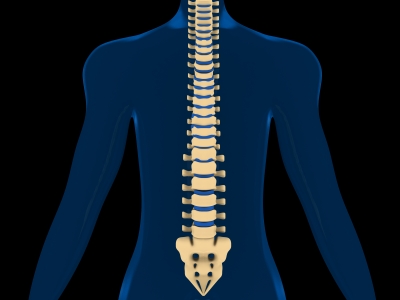Spinal fusion surgery
Written by: Paul Kochoa, PT, DPT, OCS, CKTP, CGFI
Let’s say you have some back pain, you go see a specialist, perhaps an orthopedic surgeon, and discuss your back pain. The doctor mentions surgery. What do you do?
For many patient with back pain, this can result in major problems on top of a small problem. According to an article in MSNBC referencing a study done in Spine Journal in October 2010, back surgery may backfire on patients with back pain. The specific surgery in question is the lumbar fusion procedure, when one or multiple segments of the spine are joined, or fused, together. This is performed on patients all too often, the article purports, and that in many cases it is not needed and may be detrimental to the patient’s overall health and rehabilitation progress.
In the Spine article, only about one quarter of the subjects who went under surgery returned to work in a two year period following surgery, while closer to three quarters of the subjects who didn’t have surgery returned to work in the same period of time. Of further note is that 27% of the surgery group had to go under surgery again, 36% had complications, and disability rates for those who had surgery were much higher than those who didn’t have the surgery. Granted, this study used subjects who were in a worker’s compensation setting. One could argue that this subject population can be biased in a certain way to make the results of such a study invalid, but one thing is certain, lumbar fusion surgery isn’t for everyone.
With over 27 million adults suffering from some sort of back pain, utilizing over $30 billion a year in treatment, back pain is a major topic of discussion. Some of that money is used for physical therapy and other non-invasive treatment, but the majority is used on spinal surgeries. The source and cause of back pain is complex and sometimes can be cause by multiple reasons, when given the option for surgery, always get a second opinion. Surgery rarely abolishes 100% of the back pain, and you lose the range of motion and mobility at the joints that were fused, which can put more stress on surrounding joints and tissue.
Movement analysis and physical examination is a good start to determine where your problems lie and what to do to decrease pain and dysfunction. Look at all your choices of treatment when you have a back pain issue. Surgery should never be the first choice. Remember that physical therapy is a proven evidence-based alternative to spinal surgery. Ask your local physiotherapist for details.
If you would like more information, please call Professional Physical Therapy and Training at 973-270-7417. Our offices are located within the YMCA locations in Madison and Summit, NJ. You do not need to be a member of the YMCA to visit with us.
Image courtesy of cooldesign / FreeDigitalPhotos.net